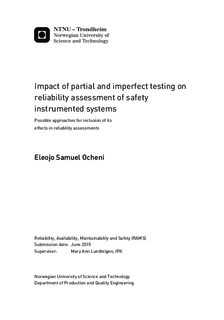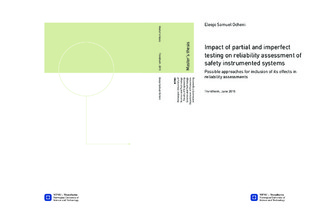| dc.description.abstract | Testing of safety instrumented systems is vital to ensure they are able to perform the required safety function when the need arises. These tests are carried out at specified time intervals. The verification of the ability of the safety systems to perform as required is carried out by reliability assessment. This is the calculation of how likely it is that the safety instrumented system will function when needed.
In carrying out reliability assessment, proof testing of safety systems is assumed to be perfect which is not always the case in reality. This thesis is important because it looks at how to evaluate this assumption to achieve a realistic estimate since testing is a key factor in reliability calculation. This study identifies the main causes of imperfectness which are classified with the five M-factors namely: Method, Machine, Manpower, Milieu and Material. Based on these, the situations where perfect test may not be realistic with examples are reviewed and documented.
I have studied and compared different ways that the effects of tests can be treated. Three approaches to consider imperfectness of test were identified: the IEC 61508 approach where we consider the proportion (fraction) of dangerous undetected failures that are revealed by the proof test, the probability of detecting a dangerous undetected failure during a given proof test and the PDS method of adding a constant probability of test independent failures. The analysis carried out compared the first and second approach. Based on the analysis, the second approach was proposed to be the most suitable of the first two approaches.
Furthermore, we present different reliability assessment methods for estimating the probability
of failure on demand of a safety system. The methods used are: analytical formulas, multi-phase Markov, fault tree approach and Petri net. The principles of application and limitation with each of these approaches are presented in this thesis. In the course of this work, we discovered that some complicated cases and systems can only be analyzed by simulation. Finally, a chemical reactor protection system is used as a case study to demonstrate the principles and methods discussed in this thesis. | |

